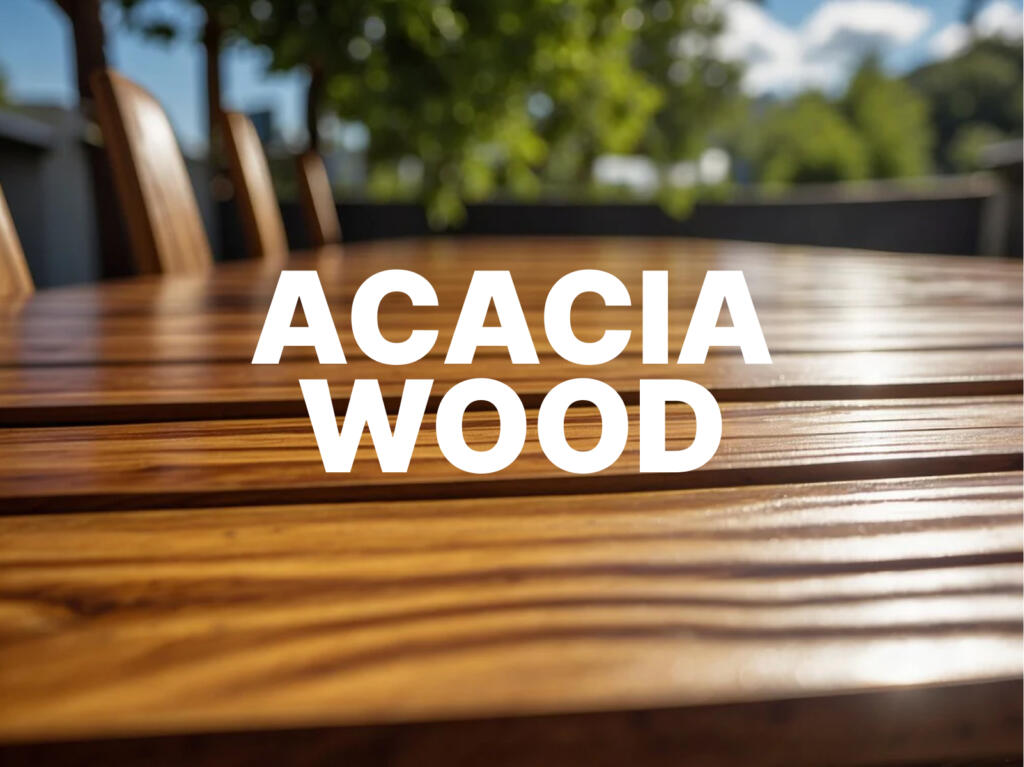
How to get rid of mold on furniture starts with understanding its causes and impacts. Mold not only damages furniture but also poses health risks. By controlling moisture, improving ventilation, and using natural cleaning solutions like vinegar or baking soda, you can effectively tackle mold and protect your home.
What Is Mold On Furniture?
Mold on furniture, caused by excessive moisture or high humidity, appears as black, green, or white patches on wooden or upholstered surfaces. These fungi thrive in damp conditions, often triggered by water leaks or poor ventilation.
Left unchecked, mold not only damages the furniture’s structure and appearance but also poses health risks, including respiratory issues and allergic reactions.
What Types of Mold Are Often Found on Wood Furniture?

Mold on wood furniture can manifest in various forms, each carrying distinct health risks. Aspergillus, often seen as a gray or green powdery growth, can lead to respiratory issues and allergic reactions, particularly for those with compromised immune systems.
Penicillium, characterized by its blue or green appearance, can also cause sneezing, eye irritation, and skin rashes.
More concerning is Stachybotrys, or black mold, which produces mycotoxins that may result in respiratory problems, fatigue, and even neurological effects.
Cladosporium, with its black or olive-green spots, is another common type that triggers respiratory issues and skin irritations.
Understanding the type of mold is critical when addressing how to get rid of mold on wood furniture. These fungi not only harm the furniture by penetrating its porous surface but also jeopardize health if left untreated.
Is Mold on Wood Furniture Dangerous?
Mold on wood furniture is more than just an eyesore, it poses significant health and property risks.
According to the Centers for Disease Control and Prevention (CDC) (2021), mold exposure can cause nasal congestion, throat irritation, coughing, wheezing, itchy eyes, and skin rashes. Individuals with asthma or mold allergies are particularly vulnerable, often experiencing intensified symptoms.
A study by RealTime Laboratories (2020) further reveals that infants exposed to mold are nearly three times more likely to develop asthma compared to those in mold-free environments.
Additionally, mold on wood furniture can lead to severe damage by infiltrating and rotting materials like cloth and wood, reducing their structural integrity and lifespan.
The presence of allergenic, pathogenic, or toxigenic mold not only compromises indoor air quality but can release harmful mycotoxins, which may result in severe health issues such as cancer, liver damage, or nervous system disorders.
Understanding how to get rid of mold on furniture is crucial for safeguarding your health and preserving your treasured belongings, creating a safe and clean living environment. For additional tips on maintaining furniture, explore our guide on the Best Leather Cleaner For Sofas to effortlessly restore your furniture’s shine.
How to Get Rid of Mold on Furniture?
Mold on furniture can be both unsightly and harmful to your health. To get rid of mold on furniture, start by addressing the source of moisture that caused the mold to grow.
White Mold on Wood Furniture
White mold on wood furniture is often mistaken for dust or debris, but it can quickly spread if left untreated. This type of mold thrives in damp and poorly ventilated spaces.
To remove it, clean the affected areas with a mixture of water and vinegar or hydrogen peroxide.
Black Mold on Wood Furniture
This mold can appear as dark, slimy patches and may cause serious health issues, including respiratory problems and fatigue.
To address black mold, use a strong cleaning solution and ensure the furniture is thoroughly dried afterward.
Green Mold on Wood Furniture
Often seen in areas with excessive humidity or water damage, this type of mold can appear velvety or powdery and may have a musty odor. It can weaken the structure of the wood over time if not addressed.
Cleaning green mold requires a combination of scrubbing with a vinegar or baking soda solution and thoroughly drying the furniture to prevent further growth.
Yellow Mold on Wood Furniture
Yellow mold on wood furniture often appears in warm, damp environments and can spread rapidly if left untreated.
Removing yellow mold involves scrubbing the surface with a solution of vinegar and water while wearing protective gear to avoid exposure. Proper ventilation and a dehumidifier can help prevent yellow mold from returning.
Orange Mold on Wood Furniture
The appearance of orange mold on wood furniture can be a sign of high moisture levels and poor air circulation.
Cleaning orange mold involves wiping it away with a mixture of vinegar and warm water, followed by drying the furniture completely. Keeping your space dry and well-ventilated is key to preventing orange mold from recurring.
Simple Steps on How to Get Rid of Mold on Furniture with Baking Soda

To effectively address mold on furniture, baking soda offers a simple and natural solution.
Begin by mixing 1/4 tablespoon of baking soda with water in a spray bottle to create a mild cleaning solution.
Spray the moldy areas thoroughly, ensuring the solution penetrates the affected spots. Use a soft-bristled brush to gently scrub the surface, helping to lift the mold without damaging the furniture.
Baking soda is an excellent solution for tackling mold and neutralizing odors, ensuring your furniture stays fresh and clean. After applying, wipe the surface with a damp cloth and let it air dry to prevent future mold growth. For more tips on maintaining your furniture, check out Furniture Care 101: How to Clean Leather Easily & Effectively and keep your pieces looking their best.
Effective Ways on How to Get Rid of Mold on Furniture with Vinegar

To effectively address mold on furniture, start by preparing a natural cleaning solution using vinegar, a well-known mold fighter.
Take a soft-bristled brush, dip it into the vinegar solution, and gently scrub the moldy areas to remove the visible growth without damaging the furniture’s surface.
This method is particularly useful for delicate materials as it minimizes abrasion while targeting mold.
After scrubbing, wipe the area with a clean, damp cloth and allow the furniture to dry completely. Ensuring proper ventilation and controlling moisture levels is essential to prevent mold from reappearing, providing a long-term solution for your furniture.
What Causes Mold on Furniture?
Mold on furniture often stems from a combination of excessive moisture, humidity, and inadequate ventilation. Poorly ventilated spaces, such as basements or bathrooms, can trap moisture, creating the perfect environment for mold to thrive.
Additionally, water damage from leaks, spills, or flooding can seep into furniture, promoting mold growth if not dried promptly. High humidity levels in the air further exacerbate the issue, saturating furniture surfaces and encouraging fungal development.
Condensation is another common culprit, occurring when warm air meets cooler furniture surfaces, resulting in trapped moisture that fosters mold.
Understanding these causes is essential to learning how to get rid of mold on furniture effectively and preventing its recurrence.
How to Prevent Mold on Furniture?
Preventing mold on furniture starts with managing moisture effectively. Mold thrives in damp environments, so maintaining indoor humidity levels between 30–50% is key.
Dehumidifiers can help achieve this balance, while promptly drying wet surfaces, such as windows or pipes, prevents lingering moisture.
Improving ventilation by opening windows, using exhaust fans, or ensuring air circulation in less-ventilated areas like basements also helps to deter mold growth.
Taking additional protective measures can further safeguard furniture. Applying mold-resistant coatings to wooden surfaces creates a barrier against moisture.
Regular cleaning and dusting reduce the buildup of dirt and humidity. Quick action, like cleaning up spills and using coasters or covers, ensures furniture stays dry, minimizing the risk of mold formation.
These steps collectively address how to get rid of mold on furniture by focusing on prevention.
Protecting Your Home and Health from Mold on Furniture
Understanding how to get rid of mold on furniture is essential for maintaining a clean, healthy, and inviting home. Mold not only harms furniture by weakening its structure but also poses serious health risks, including respiratory issues and allergies.
By managing moisture, improving ventilation, and using natural remedies like vinegar or baking soda, you can effectively remove mold and prevent its return.
Prioritizing prevention ensures a safe and comfortable living space while extending the lifespan of your treasured furniture.
Photo Source : Freepik











